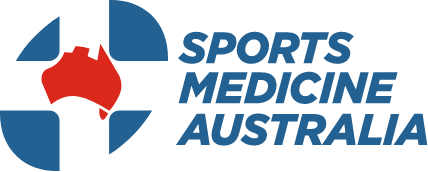Soft Tissue
Injuries
Soft tissue injuries are the most common injury in sport. Soft tissue refers to tissues that connect, support, or surround other structures and organs of the body.
Soft tissue includes muscles, tendons, ligaments, fascia, nerves, fibrous tissues, fat, blood vessels, and synovial membranes.
Risk
A soft tissue injury generally involves one or more of the following structures via sprain, strain or direct blows:
- Muscle – muscles are made up of fibres that shorten and lengthen to produce movement of a joint. Muscles are attached to bones by tendons.
- Tendon – tendons are tough bones of slightly elastic connective tissue that connect muscle to bone.
- Ligament – ligaments are strong bands of inelastic connective tissue that connect bone to bone.
The biggest risk factor for soft tissue injury is a previous injury. A player returning from injury or illness should refrain from activity until declared fit to play by a sports medicine professional.
Prevention
- Warming up, stretching and cooling down.
- Undertaking training prior to competition to ensure readiness to play.
- Including appropriate speed work in training programs so muscles are capable of sustaining high acceleration forces.
- Including appropriate stretching and strengthening exercises in weekly training programs.
- Gradually increasing the intensity and duration of training.
- Maintaining high levels of cardiovascular fitness and muscle endurance to prevent fatigue.
- Allowing adequate recovery time between workouts or training sessions.
- Wearing appropriate footwear that is well fitted and provides adequate support and traction for the playing surface.
- Wearing protective equipment, such as shin guards, mouth guards and helmets.
- Ensuring the playing surface and the sporting environment is safe and clear of any potentially dangerous objects.
- Drinking water before, during and after play.
- Avoiding activities that cause pain.
Signs and Symptoms
Types of soft tissue injuries include:
Acute injury
Injuries that occur from a known or sometimes unknown incident. Signs and symptoms develop rapidly.
Bruise (contusion, cork)
Bruises are caused by a direct force applied to the body such as being kicked or making contact with a player, which results in compression and bleeding into the soft tissue (hematoma).
Signs and symptoms: Swelling and/or discolouration.
Sprain
Sprains are caused when the joint is forced beyond its normal range of motion resulting in overstretching and tearing of the ligament that supports the joint.
Signs and symptoms: Swelling, loss of power or ability to bear weight, possible discolouration and bruising, and/or sudden onset of pain.
Strain
Strains are caused by muscles over-stretching or contracting too quickly, resulting in a partial or complete tear of the muscle and/or tendon fibres.
Signs and symptoms: Swelling, possible discolouration and bruising, and/or pain on movement.
Overuse Injury
Overuse injuries occur as a result of repetitive friction, pulling, twisting, or compression that develops over time.
Signs and symptoms: Will develop slowly, inflammation, and pain.
Immediate Management
The immediate treatment of any soft tissue injury consists of the RICER protocol – rest, ice, compression, elevation and referral. RICE protocol should be followed for 48–72 hours. The aim is to reduce the bleeding and damage within the joint.
The No HARM protocol should also be applied – no heat, no alcohol, no running or activity, and no massage. This will ensure decreased bleeding and swelling in the injured area.
This regime should be used for all ligament sprains, muscle sprains and muscle bruises. Referral for bumps and bruises which occur in sport or physical activity, other than those which are minor. is recommended.
Rehabilitation and Return to Play
You can expect full recovery from most soft tissue injuries in one to six weeks. The length of time depends on your age, general health and the severity of the injury.
In significant injuries, a plaster cast or splint may be needed. Sometimes surgery is the best option.
Acknowledgements
Sports Medicine Australia wishes to thank the sports medicine practitioners and SMA state branches who provided expert feedback in the development of this fact sheet.
Images are courtesy of www.istockphoto.com
Always Consult a Trained Professional
The information above is general in nature and is only intended to provide a summary of the subject matter covered. It is not a substitute for medical advice and you should always consult a trained professional practising in the area of sports medicine in relation to any injury. You use or rely on the information above at your own risk and no party involved in the production of this resource accepts any responsibility for the information contained within it or your use of that information.
